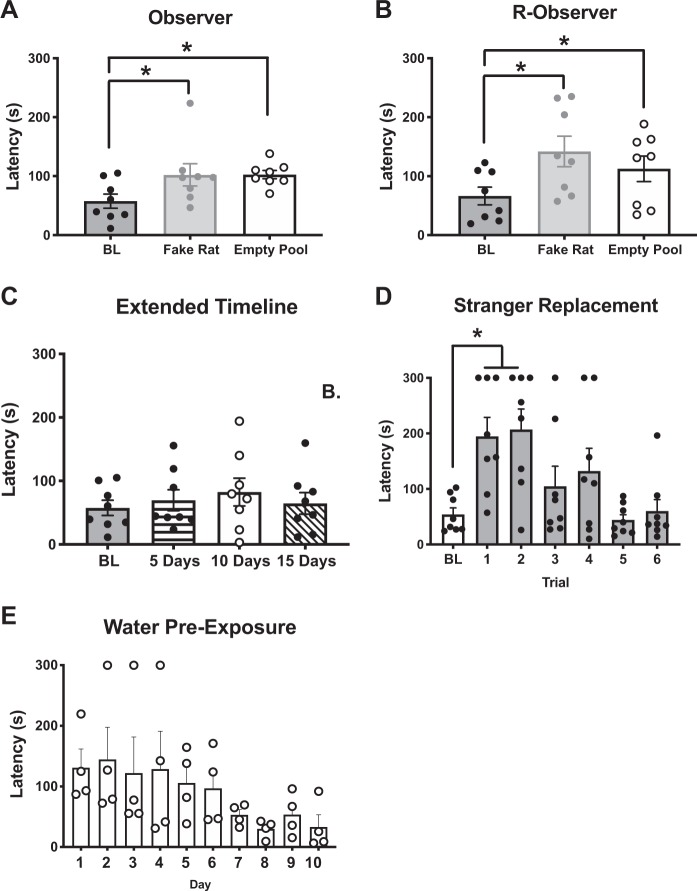Fig. 5.
Elucidating the specificity of the chain pull response on the targets’ distress. Performance of male rats across three cohorts (8 pairs/cohort) in separate control experiments using the three-chamber empathy task. a Observer rats significantly increased their chain pull latency when the distressed conspecific was removed and replaced by either a fake rat or an empty pool of water (three consecutive days of each condition) when compared to baseline (BL, average of final 3 days of acquisition). b In a separate cohort, R-Observer rats also demosntrated an increased latency to chain pull in response to a fake rat and an empty pool relative to BL (average of final 3 days of reversal). c Following 10 days (20 trials) of acquisition, Observer rats (n = 8) maintained release behavior for 15 days. Specifically, observers were reintroduced to the three-chamber empathy task and latencies to release the distressed targets were recorded 5, 10, and 15 days following their last acquisition session. Latencies did not change over time compared to BL. d In another study, a rat that was completely unfamiliar to the R-Observer rat was introduced into the wet side of the empathy chamber (“stranger”). Latency to release the “stranger” was significantly potentiated compared to baseline during the first two trials, but subsequently returned to levels not significantly different from BL. e A cohort of observer rats (n = 4) were pre-exposed to the pool of water (yoked to time spent by Targets in Experiment 3) without being rescued prior to the start of acquisition of the empathy task. There was a significant effect across days; however, there were no differences between days 1 and 10 on post hoc analysis. *Significant difference from baseline (p < 0.05).

